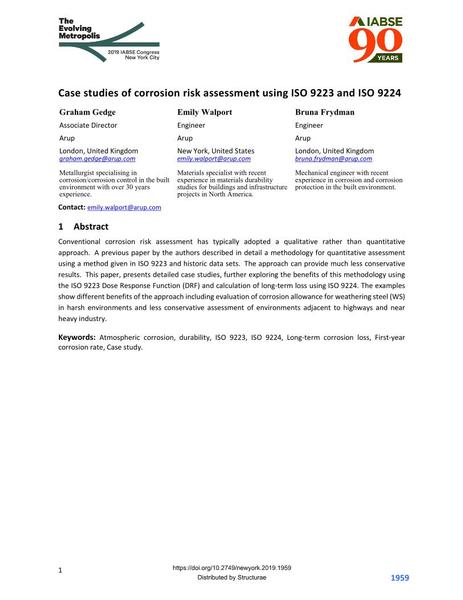Case studies of corrosion risk assessment using ISO 9223 and ISO 9224

|
|
|||||||||||
Bibliographic Details
| Author(s): |
Graham Gedge
(Arup)
Emily Walport (Arup) Bruna Frydman (Arup) |
||||
|---|---|---|---|---|---|
| Medium: | conference paper | ||||
| Language(s): | English | ||||
| Conference: | IABSE Congress: The Evolving Metropolis, New York, NY, USA, 4-6 September 2019 | ||||
| Published in: | The Evolving Metropolis | ||||
|
|||||
| Page(s): | 1959-1962, 1992-1993 | ||||
| Total no. of pages: | 6 | ||||
| DOI: | 10.2749/newyork.2019.1959 | ||||
| Abstract: |
Conventional corrosion risk assessment has typically adopted a qualitative rather than quantitative approach. A previous paper by the authors described in detail a methodology for quantitative assessment using a method given in ISO 9223 and historic data sets. The approach can provide much less conservative results. This paper, presents detailed case studies, further exploring the benefits of this methodology using the ISO 9223 Dose Response Function (DRF) and calculation of long-term loss using ISO 9224. The examples show different benefits of the approach including evaluation of corrosion allowance for weathering steel (WS) in harsh environments and less conservative assessment of environments adjacent to highways and near heavy industry. |
||||
| Keywords: |
durability case study Atmospheric corrosion ISO 9223 ISO 9224 Long-term corrosion loss First-year corrosion rate
|
||||
